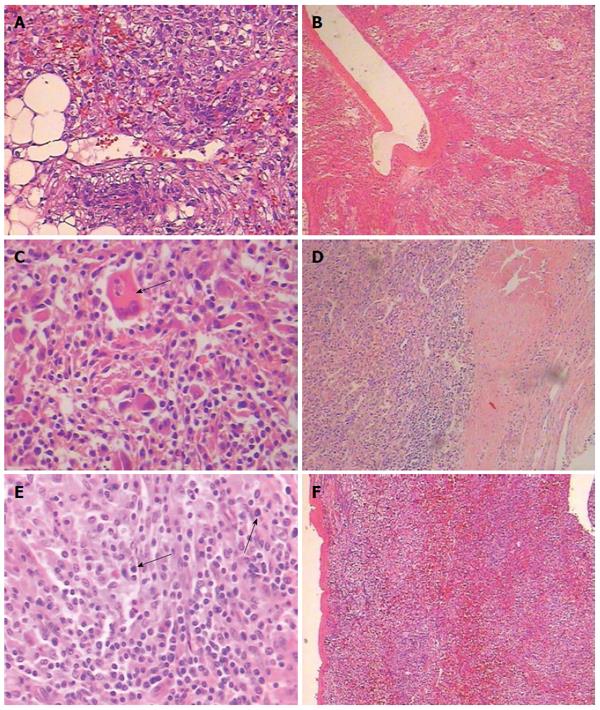Copyright
©The Author(s) 2016.
World J Gastroenterol. May 28, 2016; 22(20): 4908-4917
Published online May 28, 2016. doi: 10.3748/wjg.v22.i20.4908
Published online May 28, 2016. doi: 10.3748/wjg.v22.i20.4908
Figure 3 Histology of hepatic epithelioid angiomyolipoma.
A: The tumor comprised of sheets of large polygonal cells with abundant granular eosinophilic cytoplasm (HE, × 200); B: The tumor cells were arranged radial around blood vessels (HE, × 40); Microscopic features signifying aggressive behavior were observed: C: Cytologic atypia (black arrow) (HE, × 200); D: Coagulative necrosis (HE, × 40); E: Increased mitotic count (black arrow) (HE, × 200); F: Tumors mainly consisted of epitheli¬oid cells that comprised approximately 95% of the total neoplastic mass (HE, × 40).
- Citation: Liu J, Zhang CW, Hong DF, Tao R, Chen Y, Shang MJ, Zhang YH. Primary hepatic epithelioid angiomyolipoma: A malignant potential tumor which should be recognized. World J Gastroenterol 2016; 22(20): 4908-4917
- URL: https://www.wjgnet.com/1007-9327/full/v22/i20/4908.htm
- DOI: https://dx.doi.org/10.3748/wjg.v22.i20.4908









